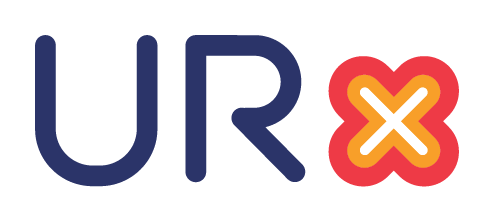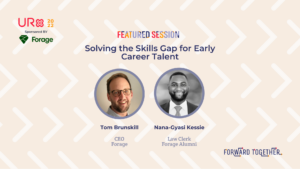In an economic downturn, most companies bunker down: go lean, pare back, and ride out the storm. In rare instances, companies use it as an opportunity to drive bolder changes – setting up their organization’s for success for years to come.
Innovation never stops – especially during leaner times.
Famously, product innovation has flourished in leaner times. Netflix launched its world-first streaming service during the Great Recession – and did so resourcefully by forming partnerships with the products that their target users were already using, such as Xbox, rather than investing in new channels to tap into their homes. Companies like Mailchimp boldly adopted a “freemium” option, and ended up growing their user base five fold.
Even in early talent recruiting we’ve seen radical, lasting change prompted by harsh conditions. The pandemic halted campus recruiters’ in-person activities and created a huge pivot to virtual engagement. Two years on, teams that had been attending an average of 48 career fairs in a single year are now questioning their efficacy, accessibility, and resource efficiency.
“They’re an endless wedding receiving line where it’s really difficult to have a conversation that is at all meaningful for the candidate and the recruiter… If I have to write a check to every place that I’m going to participate, I’m probably going to be forced to be more selective. And if I’m more selective, I am now in that situation where I’m going to core schools.” Laura Mills, AVP HR at Cognizant
So what can the world of early talent recruiting take from this?
New conditions create catalysts for change.
Talent teams have the big task of maintaining a sustainable pipeline of high-quality candidates, justifying the costs of attracting, engaging, nurturing, and hiring talent, keeping retention rates up, and implementing hiring practices that empower DEI&B initiatives.
Some of these challenges are inescapable. The new generation of talent has a more transient view of their future employers than previous generations, and talent teams can’t control that.
Others, however, are ripe for an overhaul – and making the changes are easier than you think.
What can talent teams do?
1. Use virtual platforms to reduce in-person expenditure while expanding your reach and engagement with early talent.
We’ve all seen the studies: this generation of talent prefers to access information and form connections online. Further, NACE finds that virtual recruiting provides historically marginalized populations with a better job search experience than traditional recruiting.
If your team is thinking of prioritizing in-person engagement yet again, take the time to take stock on why. Is it forcing you to descale your reach, and target only ‘core’ campuses?
Instead, reframe virtual platforms as not simply a bandaid used over the pandemic, but as a scalable, accessible, and interactive channel to early talent.
Employers like Walmart, SAP, and Cognizant do this through virtual job simulations. By offering open-access simulated work experiences, they generate inbound connections with early talent. And, conveniently, these simulations are integrated into coursework across hundreds of colleges worldwide – creating on average nearly 5 hours of employer brand immersion per simulation (a lot more than a booth at a career fair, to say the least!)
2. Retain top talent through positive friction, not swag.
There’s nothing worse than thinking you’ve met your hiring numbers, only to have a handful of new starters opt out last minute. Actually, there is something worse – when they’ve gone to a competitor.
Unfortunately, the answer to this issue isn’t showering candidates with swag. That’s because it approaches the problem from the wrong side: trying to generate commitment once they’ve come to the end of the pipeline, rather than selecting for commitment throughout the pipeline.
The answer? Giving candidates that truly want to work for you the opportunity to stand out amongst the ocean of applicants.
This is where positive friction comes in. Employers like JPMorgan, Deloitte, and BCG use the completion of their virtual job simulations as a signal of a genuinely interested candidate – because a candidate that has spent 4-8 hours completing a job simulation in their limited free time is a demonstrably high-intent one.
That’s why candidates that have completed their simulations are:
- 4x more likely to receive an offer
- 4x more likely to accept an offer.
It’s called ‘positive friction’ because:
- Participation is not compulsory, nor treated as a form of assessment.
- If they complete the simulation and do not progress to the role, they walk away with real-world tangible skills they can apply elsewhere, creating everlasting goodwill towards the company that provided the simulation.
3. Preskill to easily and scalably build a pipeline of high quality candidates.
The growing skills gap doesn’t go away with an economic downturn. In fact, addressing it within the next few years remains a critical priority – not just for employers, but also global institutions like the World Economic Forum.
- By 2025, we will see $8.5 trillion in unrealized revenue because of the skills shortage
- In-demand skills will no longer be widely available by 2030 – even though by 2025, $500 billion will be spent on upskilling.
All to say, there is a powerful financial incentive to prioritize solving the skills gap sooner rather than later. And talent teams are uniquely placed to make a major impact.
How? Through preskilling.
Talent teams across the globe from employers like HSBC, AON, Lululemon, Electronic Arts, GE, and the big four consulting firms use preskilling to bridge the gap between study and work, leaving preskilled candidates better equipped to hit the ground running from day one.
You can learn more about preskilling here. TL;DR:
- Preskilling allows candidates to explore careers and gain skills by experiencing the workplace.
- Forage enables this by creating free, open-access simulations of actual roles within a partner organization to train early talent – before they even enter the talent pipeline
- By opening up skilling opportunities to the masses for free and at scale, employers benefit from candidates that are 99% more skilled in the role.
About the Author
Yasmin Monfared is Forage’s Research Director. She is responsible for leading and collating research and insights across Forage’s student, educator, and employer community to help recruiters enhance and evolve their talent strategies.




